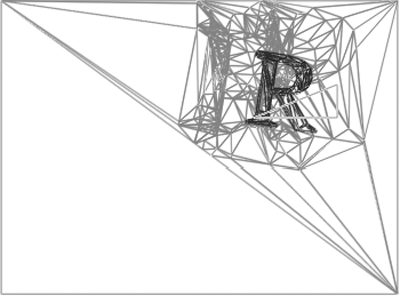Parallel Progressive Refinement and Projection Based Discontinuity Meshing for Radiosity
August 1st, 1995
Categories: MS / PhD Thesis, Software, Visualization, VR

Authors
Goldman, J.About
This dissertation presents algorithms and techniques that are applicable to the radiosity method for computer graphics. First, radiosity and relevant background information is introduced. The reconstruction problems with uniform meshing and their solutions are discussed. This is followed by a description of an implementation of a parallel progressive refinement algorithm and its use in the CAVE Automatic Virtual Environment (CAVE). A new approach to the meshing problem is presented with a parallel planar projection discontinuity meshing algorithm. This algorithm uses perspective projection, hardware assisted visibility determination, and constrained Delaunay triangulation to solve problems with uniform meshing. The algorithm makes use of available hardware resources to a prior determine shadow boundaries that are essential to computer the discontinuity mesh. This method can be implemented with a minimum of commonly available graphics hardware and capabilities, namely Z-buffering and orthographic and perspective projections. Significant speedups can be obtained with systems that support stencil masks or Z-buffer through hardware. Finally, results from the parallel renderer in conjunction with the mesher are presented along with future items of research in this area.
Resources
Citation
Goldman, J., Parallel Progressive Refinement and Projection Based Discontinuity Meshing for Radiosity, Submitted as partial fulfillment of the requirements for the degree of Master of Science in Electrical Engineering and Computer Science, Graduate College, University of Illinois at Chicago, Chicago, IL, August 1st, 1995.